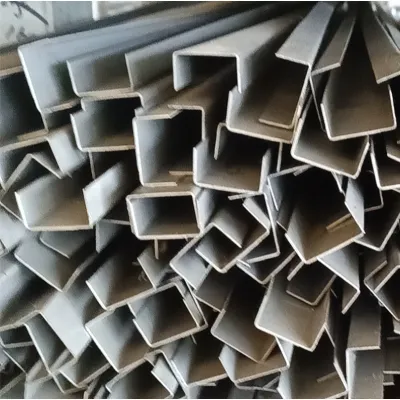loading...
- No. 9, Xingyuan South Street, Dongwaihuan Road, Zaoqiang County, Hengshui, Hebei, China
- admin@zjcomposites.com
- +86 15097380338
- Welcome to visit our website!
fibreglass reinforcement bar
Fiberglass Reinforcement Bar A Revolutionary Material for Construction
In recent years, the construction industry has seen significant advancements, particularly in the materials used for reinforcement. Among these innovations, fiberglass reinforcement bars, commonly known as GFRP (Glass Fiber Reinforced Plastics) bars, have emerged as a revolutionary alternative to traditional steel reinforcement bars. With unique properties and numerous advantages, GFRP bars are changing the dynamics of modern construction.
Understanding Fiberglass Reinforcement Bars
Fiberglass reinforcement bars are made from a composite material consisting of glass fibers embedded in a polymer matrix. This combination offers a lightweight yet strong alternative to steel rebar. The manufacturing process involves layering glass fibers in a resin, which is then cured to create a solid, resilient product. The result is a corrosion-resistant, non-magnetic, and highly durable reinforcement solution that addresses many of the shortcomings associated with traditional steel bars.
Key Advantages of GFRP Bars
1. Corrosion Resistance One of the most significant drawbacks of steel reinforcement bars is their susceptibility to corrosion, especially in environments exposed to moisture, salt, and chemicals. GFRP bars are inherently resistant to these elements, making them particularly suitable for structures in coastal areas, wastewater treatment plants, and environments prone to chemical exposure. This resistance not only prolongs the lifespan of the structure but also reduces maintenance costs associated with corrosion repair.
2. Lightweight GFRP bars are typically one-quarter the weight of steel bars, allowing for easier handling and installation. This lightweight nature simplifies transportation and positioning on construction sites, reducing labor costs and accelerating construction timelines. Additionally, reduced weight minimizes the load on supporting structures, which is particularly beneficial in projects where weight constraints are critical.
3. High Tensile Strength Despite their lightweight composition, GFRP bars boast impressive tensile strength, often surpassing that of steel. This high strength-to-weight ratio enables architects and engineers to design structures with greater efficiency, utilizing less material while maintaining structural integrity. The ability to withstand significant tensile loads without deformation makes GFRP bars a reliable choice for bridges, tunnels, and high-rise buildings.
4. Non-Magnetic Properties GFRP bars are non-magnetic, making them ideal for applications in areas sensitive to magnetic interference, such as hospitals, research facilities, and data centers. The use of non-magnetic materials helps maintain the integrity of sensitive equipment and ensures that operational activities are not disrupted by stray magnetic fields.
fibreglass reinforcement bar

5. Environmental Benefits As sustainability becomes an increasingly vital aspect of construction, GFRP bars offer a more environmentally friendly alternative. The production of fiberglass reinforcement bars typically has a lower carbon footprint compared to steel manufacturing, which involves energy-intensive processes. Additionally, the durability and longevity of GFRP bars contribute to a reduction in resource consumption and waste over the life cycle of a structure.
Applications of Fiberglass Reinforcement Bars
The applications of GFRP bars are diverse, extending to various sectors within the construction industry. They are commonly used in the reinforcement of pavements, bridges, tunnels, marine structures, and residential projects. Furthermore, their use in infrastructural projects, such as highways and utility poles, showcases their reliability and effectiveness under varying environmental conditions.
Challenges and Considerations
Despite the numerous benefits, the adoption of GFRP bars is not without challenges. One notable issue is the higher initial cost compared to steel reinforcement, which can deter some builders and developers. However, when considering the long-term savings from reduced maintenance, increased lifespan, and decreased labor costs, the overall value of GFRP bars becomes evident.
Moreover, knowledge and familiarity with GFRP materials among engineers and construction professionals are still developing. As more education and successful projects utilizing GFRP technology emerge, industry acceptance and utilization are expected to grow.
Conclusion
Fiberglass reinforcement bars represent a significant advancement in construction materials, offering a range of advantages that address many of the challenges posed by traditional steel reinforcement. As the construction industry continues to evolve, GFRP bars are set to play an increasingly vital role in creating sustainable, durable, and efficient structures. Embracing this innovative material not only enhances construction practices but also aligns with the growing imperative for environmentally conscious building solutions. With continued research and development, the future of reinforcement technology looks promising, paving the way for a more resilient and sustainable built environment.
-
GRP Structures: The Future of Lightweight, High-Performance EngineeringNewsJun.20,2025
-
FRP Water Tank: High-Performance Storage for Corrosive and Clean Water SystemsNewsJun.20,2025
-
FRP Square Tube: The New Industry Standard for Chemical and Structural ApplicationsNewsJun.20,2025
-
FRP Pultruded Profiles: The Ultimate Choice for Lightweight Structural StrengthNewsJun.20,2025
-
FRP Handrails: The Safer, Smarter, and Stronger Choice for Modern InfrastructureNewsJun.20,2025
-
FRP Grating: The Smart Solution for Durable, Lightweight Industrial FlooringNewsJun.20,2025
-
Why Choose a Galvanized Water Tank for Your Storage NeedsNewsMay.21,2025
